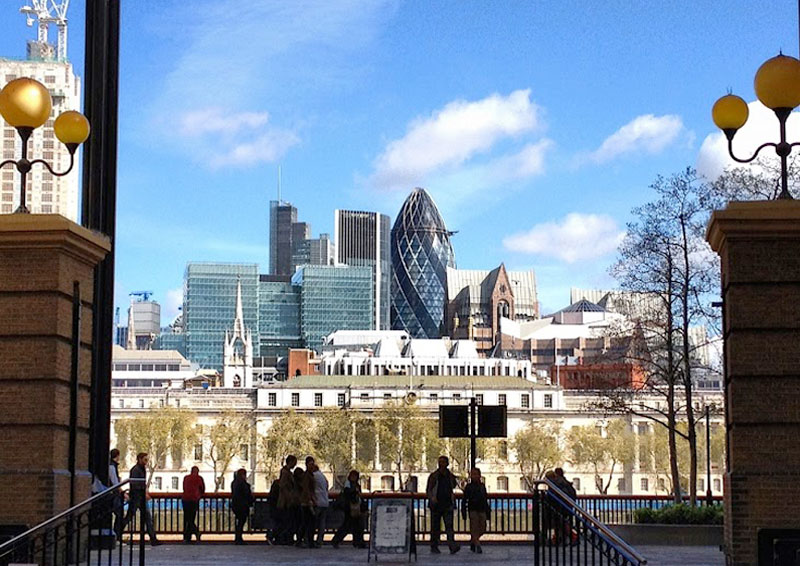City
A city is a human settlement with a large population. While cities have been a feature of human civilisations for many centuries, they have only become a predominant way of life as a result of industrialisation, with rapid urbanisation meaning that more than half the world’s population now living in cities. This figure is predicted to rise to more than 70% by the second half of the 21st century.
There are a range of different definitions and ways of categorising cities depending on the data-analysing organisation, census records or country. Cities can be determined by the number of inhabitants, the role it plays within a larger political context, the role it plays in terms of being a hub for the larger surrounding area, education, religion and so on.
In the UK, city status traditionally depended on the presence of an Anglican cathedral. It was not until 1889 that this requirement was dropped. The UK’s official criteria for defining a city today is not completely clear, but those which have been in place since 1907 specify that it must contain at least 300,000 inhabitants, have a good record of local government, and have a distinct identity that is the centre of a wider area. Other definitions suggest city status can be associated with having a cathedral or a university, a particular form of local government, or simply having a large population. More recently, city status has been granted through a series of competitive bids, managed by the Ministry of Housing, Communities and Local Government.
Other ways of defining a city include:
- Municipality - This is the political definition of a city. For example, London is made up of 32 boroughs and the City of London; New York is made up of 5 boroughs; Paris is made up of 20 arrondissements.
- Urban area - This can refer to the urban sprawl of a city, but it is unclear as to whether features in between built up areas like parkland and forests are to be included.
- Metropolitan area - The effective economic footprint of a city, typically measured by commuting patterns. However, this can include a large number of smaller towns and villages that consider themselves separate from the city in question.
- Megacity - This refers to metropolitan areas with a total population of more than 10 million people. The definition of what constitutes a megacity generally refers to the population of an urban agglomeration, that is, it includes people living in the immediate suburbs outside of the established border of the city.
- Smart city - Defined in PAS 180: 2014 Smart Cities. Vocabulary as '...the effective integration of physical, digital and human systems in the built environment to deliver a sustainable, prosperous and inclusive future for its citizens.'
- Garden city - The Town and Country Planning Association (TCPA) suggest, that a garden city is a ‘holistically planned new settlement which enhances the natural environment, tackles climate change and provides high quality housing and locally accessible jobs in beautiful, healthy and sociable communities’.
For more information see: Types of city.
A suburb is an area on the edge of a large town or city, typically residential in character. The term ‘suburbs’ is thought to derive from the Latin ‘suburbium’ in which ‘sub’ means ‘under’ and ‘urbs’ means ‘city’.
The growth of some cities is restrained by a 'green belt'. Green belts establish a buffer zone between urban and rural land, separating town and country and preserving land for forestry, agriculture and wildlife where environmental conditions can be improved and conservation encouraged.
[edit] Related articles on Designing Buildings
- City centre.
- Compact sustainable city.
- Conurbation.
- Densification.
- Engineering Smart Cities.
- Garden cities.
- Gentrification.
- Global smart cities market.
- Green belt.
- Hamlet.
- Megacity.
- Region.
- Smart cities need to find some smarter answers.
- Smart city.
- Suburb.
- The compact sustainable city.
- The Living City: Rethinking our role in the Digital Age.
- Town.
- Twin cities.
- Types of city.
- Types of place.
- Urban.
- Urban fabric.
- Urban sprawl.
- Village.
Featured articles and news
Gregor Harvie argues that AI is state-sanctioned theft of IP.
Heat pump and wind turbine sound calculations for PDRs
MCS publish updated sound calculation standards for permitted development installations.
Homes England creates largest housing-led site in the North
Successful, 34 hectare land acquisition with the residential allocation now completed.
Scottish apprenticeship training proposals
General support although better accountability and transparency is sought.
The history of building regulations
A story of belated action in response to crisis.
Moisture, fire safety and emerging trends in living walls
How wet is your wall?
Current policy explained and newly published consultation by the UK and Welsh Governments.
British architecture 1919–39. Book review.
Conservation of listed prefabs in Moseley.
Energy industry calls for urgent reform.
Heritage staff wellbeing at work survey.
A five minute introduction.
50th Golden anniversary ECA Edmundson apprentice award
Showcasing the very best electrotechnical and engineering services for half a century.
Welsh government consults on HRBs and reg changes
Seeking feedback on a new regulatory regime and a broad range of issues.
CIOB Client Guide (2nd edition) March 2025
Free download covering statutory dutyholder roles under the Building Safety Act and much more.
Minister quizzed, as responsibility transfers to MHCLG and BSR publishes new building control guidance.
UK environmental regulations reform 2025
Amid wider new approaches to ensure regulators and regulation support growth.
























